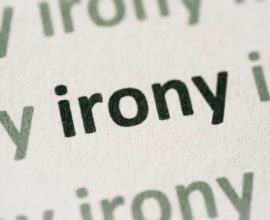How to organize your manuscript
A book is usually organized into Front Matter, Body Text, Back Matter and Cover Page. Some of them are mandatory and others are optional. In this post, we will look at some of the important elements in a book and see if you need to include them in your manuscript writing. There are other pages like the title page, half-title page and the copyright page which will be added by your publisher.
1. Front Matter
The preliminary matter given at the beginning of a book before the main body or the actual content constitutes the front matter of a book. The front matter includes the following pages.
1.1 Dedication
An optional dedication page can be used to offer thanks or to dedicate your book to someone special.
1.2 Foreword
Foreword is a chance to include a key endorsement of your book from a peer or someone with knowledge about your book. For fiction books, find someone who has read a copy of your manuscript. If your book is nonfiction, try to find a subject-matter expert on your topic who can lend credibility and context to your work.
1.3 Preface
Preface which is essentially the same as an introduction is the first appearance of your voice as the author. With a conversational tone, use the preface to share a bit about yourself and why you wrote the book. For fiction books, the preface often includes the story of how you got the idea for the book and how it developed over time. For nonfiction and reference books, the preface should be more utilitarian.
1.4 Acknowledgements
If there’s anyone who worked on your book that you didn’t include on the title page or mention in the preface, you can include them on the acknowledgment page. Acknowledgments are brief, and usually contain a list of names rather than a full explanation of each person’s involvement in the book.
1.5 Prologue
Reserved exclusively for fiction books, the prologue generally introduces a character, scene, or scenario that is important to the story. A prologue is optional, and may serve the reader better as the beginning of the first chapter. As the author, only you can make the final decision.
1.6 Table of Contents
The Table of Contents lists the part titles and chapter titles with page number. For Non-Fiction books, a table of contents page is automatically generated by the Notion Press Interior Design App. It is not usually used in a Fiction book.
2. Body Text
This is the body of the book and contains your actual story or content. The body text can be organized in the following ways.
2.1 Chapters
Many novels of substantial length have chapters. Non-fiction books, especially those used for reference, almost always have chapters for ease of navigation. In these works, chapters are often subdivided into sections.
2.2 Sub-Chapters/Sections
Sub-Chapters are usually used in Non-Fiction works to better organize content into a readable format. If your book is Fiction, you may consider using a section break to denote a new scene within the same chapter.
3. Back Matter
3.1 Epilogue
Reserved exclusively for fiction books, the epilogue is a piece of writing at the end of a work of literature or drama, usually used to bring closure to the work. It is presented from the perspective of within the story; when the author steps in and speaks directly to the reader, which is more properly considered an afterword.
3.2 About the Author
An Author bio is a description about the author. It is usually written in third person and placed as the last page in a book.
4. Cover Page
4.1 Blurb
A blurb is a short description of your book which gives the reader an idea of the contents of the book. The blurb is placed in the back cover and as the eBook’s short description.





